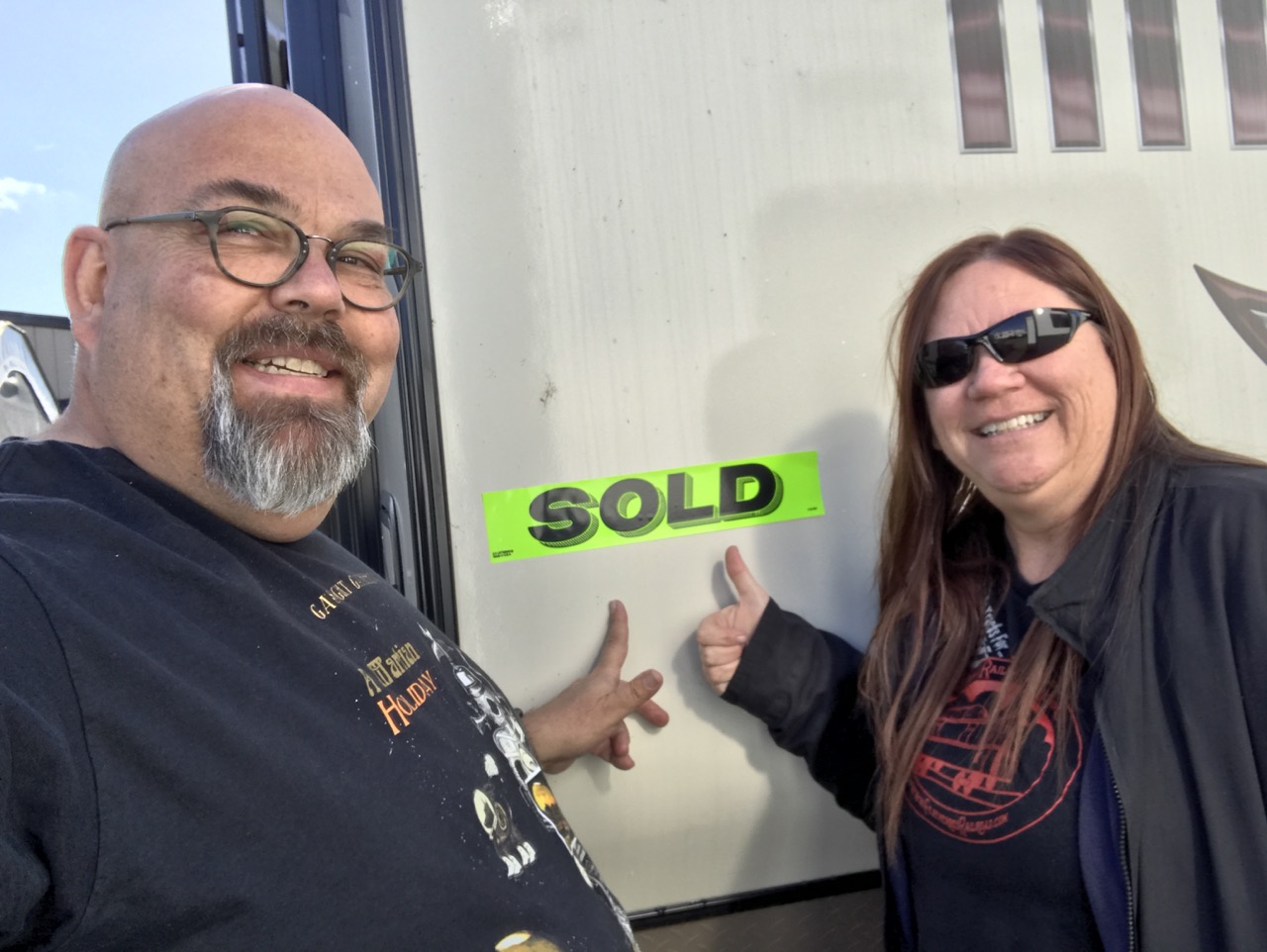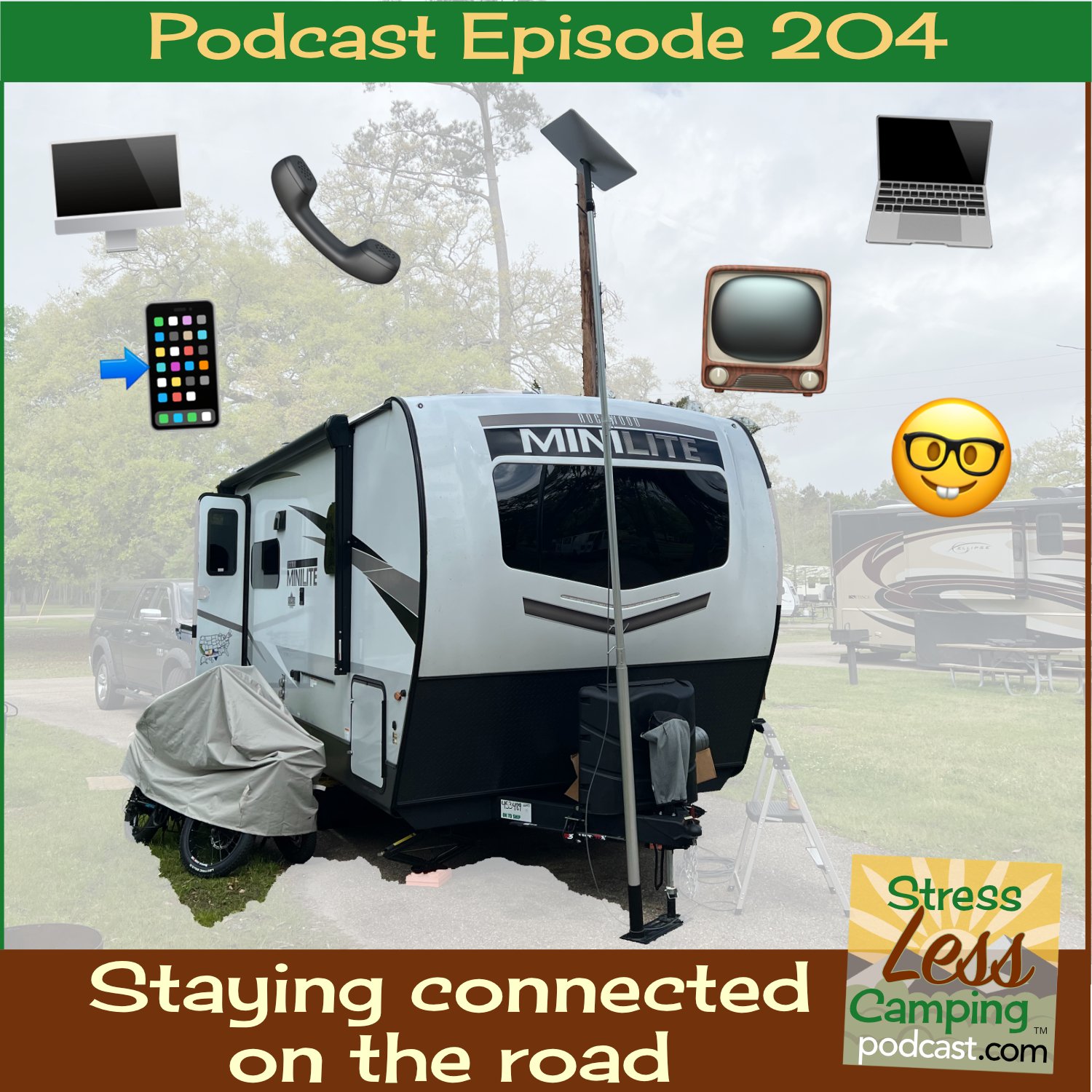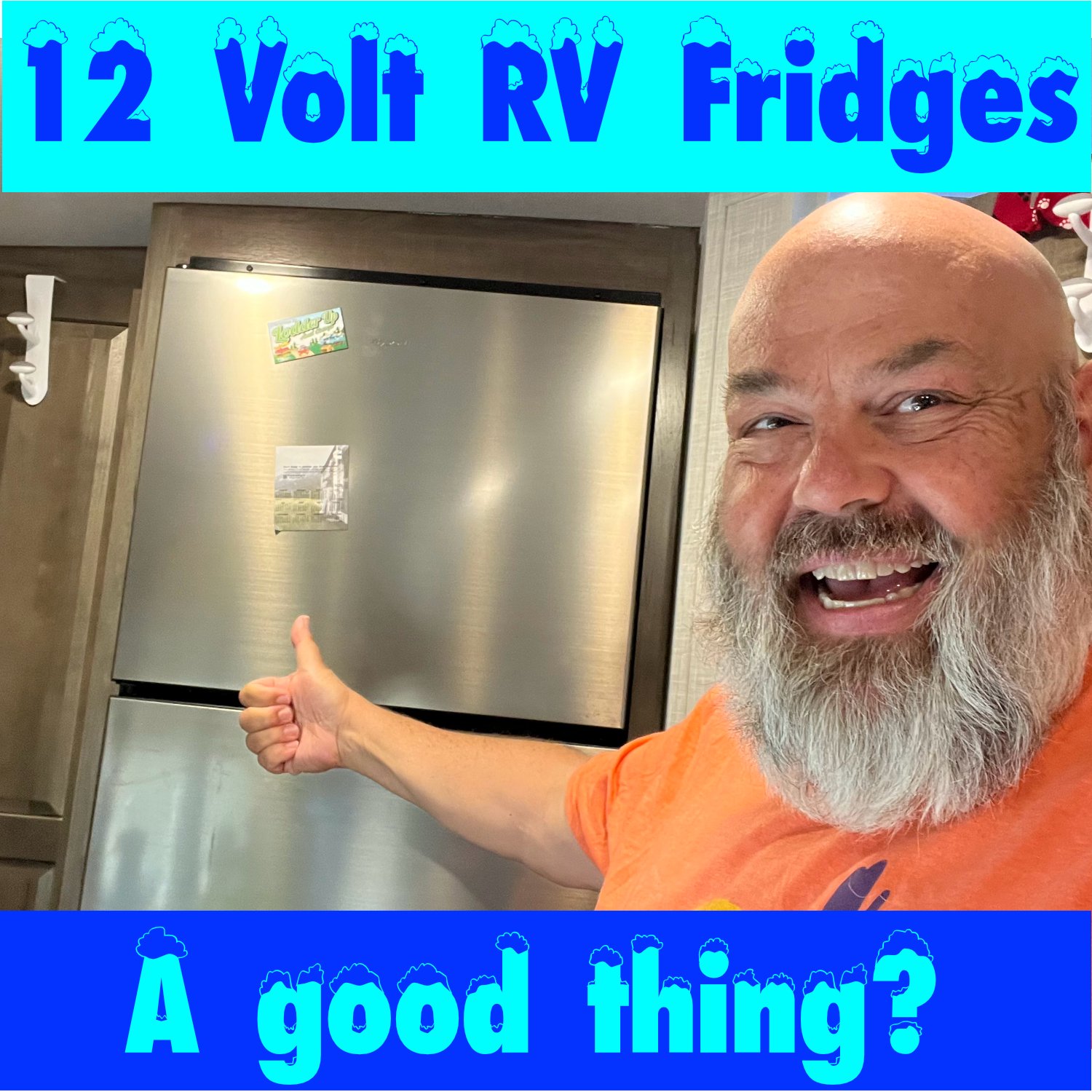How we get Internet in your RV while traveling?
What’s the best way to get Internet for RVers?
How do you get Internet in your RV on the road? One of the biggest hurdles many working RVers face is getting Internet on the road. Can you just use campground Wifi, or what about using your cell phone as a hot spot? Is Starlink as good as people say?
Options for Internet in your RV
The options to get Internet on the road are as varied as the number of RVs. But there are a few main categories:
Campground Connectivity
Based on my own travels campground Wi-Fi is, at best, lousy. Sure, there are a few campgrounds who have stepped up their coverage but, for the most part, it’s pretty terrible. Further, you’re sharing a connection with many other campers and this can lead to your information being compromised.
For example, if you buy something on line while at an RV park and are using campground Wi-Fi you are quite literally broadcasting the credit card information throughout the park.
There are ways to be more secure in your connectivity, but campgrounds are often in places where even they have difficulty getting great coverage so passing that lackluster performance on is the only choice they have.
Systems that would make a campground’s Wi-Fi outstanding are also very, very expensive and we all already often complain about the cost of a night in a campground. Adding many tens of thousands of dollars to their cost means they’re passing that on to you.
There are some devices, including some built into RVs, that offer the ability to boost the signal you get at your RV from the campground’s Wi-Fi. However know that campground wifi is like a pipe - if the campground is only able to get so much bandwidth it doesn’t help to boost a signal that won’t deliver more throughput.
Imagine trying to provide three houses’ water needs with a garden hose - if the supply is limited it’s not going to offer much performance for each user and, since campgrounds are often in rural areas, they may only have access to so much connectivity themselves.
Some of the devices available to boost the signal also offer a degree of protection against people being able to intercept your signal and gain the information you’re broadcasting.
Pepwave MAX transit portable cell phone Internet router
Cell based Internet
Another option for Internet coverage on the road is cell-based Internet coverage. The cell phone companies are doing an ever better job providing coverage even to remote locations. Not always, of course.
Many cell phone plans do have a provision for you to tether something like a laptop or iPad to your phone and use it to catch up on articles and podcasts on the StressLess Camping website. You can also get tablets like the iPad that actually have their own data plans.
But this limits you to one carrier. Even Verizon, which claims to have the best coverage, has some big holes in their coverage.
Further, most cell phone data plans have limits as to how much you can use. Even plans called “unlimited” typically only provide so much data and then either throttle the speeds to nearly unusable levels or just shut you down altogether in “high traffic areas.”
High traffic areas means that if they see that their cell towers are approaching the limit of how many customers they can serve the cell companies can limit or even stop providing coverage to your device depending on the plan.
Cellular hot spot hack
The way we make cell phone service work for us is by having one cell phone on AT&T, one on Verizon and then having a hot spot on T-Mobile. This means that we have the best chance of getting coverage in any given spot.
Our hot spot is a T-Mobile device. We bought a pre-paid plan for this which included 50 gigabytes of data. By using a pre-paid plan we only pay for the data we’re using while we’re using it.
On months where we have no need for cell phone data, there is no cost. If we go through a lot of cell phone data we buy it on the pre-paid plan at $50 for the 50 gigabyte plan. This makes it the perfect back-up to our existing cell plans that are tied to our phones and as a back-up to our Starlink plan as well.
Satellite internet for RVers
The biggest news in satellite-based Internet connectivity is Starlink. This is the result of Elon Musk and SpaceX and uses arrays of low-orbit satellites to provide rather fast Internet. How low? In some conditions you can see the lights of the orbiting satellites overhead and it was reported that a number of people called the authorities thinking they were spacecraft from other worlds.
This RVer has their Starlink dish mounted on a flag pole much like we do.
Starlink advantages
The big advantage of Starlink is that performance is really good when it’s good. Further, with changes the company has made there are plans specifically for RVers that offer unlimited data use, sometimes you can see very high speeds.
The performance available and lack of data caps on most plans make Starlink one of the better choices for RVers when it comes to Internet connectivity. In fact the surprisingly low latency (the time between when you make a request of a website and when it is delivered) along with high speeds make Starlink unique in the world of satellite-based coverage.
For the Starlink “Roam” package, which is currently the plan name for the Starlink service that you can get for use on land-based mobile coverage, one of the advantages is that you can turn the plan on and off. So if you’re spending part of the year on the road and part back at home, you can simply turn off the plan when you don’t need it.
For example we have coverage at our home so when we’re here we turn off our Starlink system. It’s easy to do with the free Starlink app or via a web browser. When you need to turn the service back on, you just do. Simple.
Starlink disadvantages
The results of doing a speed test on our Starlink connection in a relatively densely populated area (near Albuquerque).
Starlink has disadvantages as well. The plan for RVers is sort of a second-tier plan with the company prioritizing performance for those who have residential or commercial plans locally. In other words, if you trot into town with your Starlink satellite receiver you might find reduced performance simply because the company has prioritized data consumption by the people who live there.
Further, as RVers we like to go places that have inconvenient obstacles like trees and such. Satellite internet simply doesn’t like this - and Starlink really appreciates a clear view of the sky. This can also make it useless in cities with tall buildings or even in some boondocking spots in canyons and such.
The connector to the Starlink dish (called Dishy) is rather fiddly for some and the company’s customer service record is worse than many RV dealers’ records. Hard to believe, but true. If you break the proprietary connector, you may be out for some time.
The antenna is also not well suited to permanent mounting outside an RV so some creative RVers have devised pole mounts and other ways to attach the dish. But most still leave it unattached and then put the dish where it can best pick-up coverage once they’re camped. This lends itself to longer stays, but simple overnighting makes it a hassle.
We have our own system of mounting and using Starlink on our RV which you can find here.
Since we got Starlink in February of 2023 the price has gone up and the plans have changed twice. The company seems to have difficulty in making solid decisions and sticking with them.
The price of Starlink as I write this is $165/month for what is now called the Roam package. Further, you have to buy Starlink’s proprietary dish at $599. This is not a low-priced investment and should be something you consider only if you need a lot of connectivity.
Another disadvantage of Starlink, and most satellite-based Internet services, is that they have to have 120vac (household current). That means that, if you’re into boondocking, you may find yourself having to run a generator or an inverter which has its own set of disadvantages. You could use something like the Jackery that we have if you would rather not run an inverter.
Our solution
After a bunch of research what we chose to remain as connected as possible is a combination of systems.
We did sign-up for Starlink and use this as our primary coverage. We have found that it works very, very well much of the time. But, when there are a lot of trees around or other obstacles, it’s less optimal and can even be completely useless.
Our back-up of the Starlink plan is having the three cell phone plans I wrote about previously.
With these four points of coverage we have been able to remain almost consistently on line which can be important for a business based on the Internet.
Money talks
Having three different cell plans means we don’t necessarily get the family discounts many cell providers offer. So, we probably do pay more for our cell coverage than you would if you had everybody on one plan.
Starlink is also pricey. At this writing it costs $599 for the hardware and $165/month for a mobile plan.
A word of warning
There are a lot of people who will make promises about how great their Internet coverage is and tell you that their plans are unlimited. Frequently these folks can be less than honest. There are times when the plans work until they don’t.
This usually happens when the companies offering the plans fib to the cell phone companies they are wholesaling the plans from by telling them they are on devices that they aren’t or making other false claims. When the cell phone companies catch on, sometimes they can pull the plug right away and you’re stuck with nothing
Improving your signal
We have a Camco portable RV flag pole, which we wrote an article about here. Thanks to our friend Joshua Sheehan from Gander Flight (video featured above) we were turned-on to a custom mount to allow us to put our Starlink dish at the top of the flag pole. This allows the dish to be raised above obstacles including other RVs. It also helps reduce theft.
I have been very pleased with the ability for this solution to stand-up to winds including some pretty strong winds. It’s easy to set up as there is a foot on the flag pole that we set under the tire of our trailer or sometimes under the tongue jack.
Camping means getting away from the Internet
I have heard the argument by some that you should just be off the Internet if you’re going camping. This is a legitimate concern. But here’s one scenario.
A friend of ours is pretty critical to their company. They were able to arrange a weekend away but needed to be able to address any issues that came up. By having some degree of being able to read e-mails they were able to get away and relax. They would only be notified if something went wrong.
They stayed off the Internet the whole weekend and spent time with their family. But if there was no way to be connected, they couldn’t have gone camping at all. Period.
Having connectivity doesn’t mean you spend all your away time looking at the Internet. It just might be something that makes it possible to get away for some.
We also use the Internet to listen to podcasts that we enjoy as we wind down our days and some folks like connecting to catch up on content like news or podcasts. Just having a good connection doesn’t mean that’s all you do, but options are never a bad thing.
For folks like us, we might spend some time during the day catching up with you but the rest exploring. Options are always a good thing and can mean very different things to very different campers.
My recommendation
What should you do? That depends on what you need.
If you’re just hoping to watch movies or download social media content or the StressLess Camping podcast, having a mobile hot spot and service through your cell carrier may be all you need.
I like our solution of having three different cell providers as detailed above. Even if it’s not for being connected it does increase the chance that one of us has a cell signal most of the time. I like just being able to make a phone call or download a podcast. I think it’s especially good if there’s an emergency and you need to be able to call for help.
If you’re a needs are greater, particularly if you absolutely have to be connected, Starlink has been great for us. But there are times it simply doesn’t work.
We’ve gotten to the point where we’re looking at places that we camp in advance through services like Campground Views. Checking for tree coverage has become more and more important since we have so much solar on our Rockwood Mini Lite plus now want a clear view of the sky thanks to Starlink. Further, we’re also using our RV Trip Wizard system to check out how good the cell signal is when we go camping.
Yes, enjoying some StressLess Camping means getting away from it all. But sometimes we have to get away from most of it.
Other resources
Starlink mount for Camco flag pole
Techno RV - Pepwave routers and cell plans











